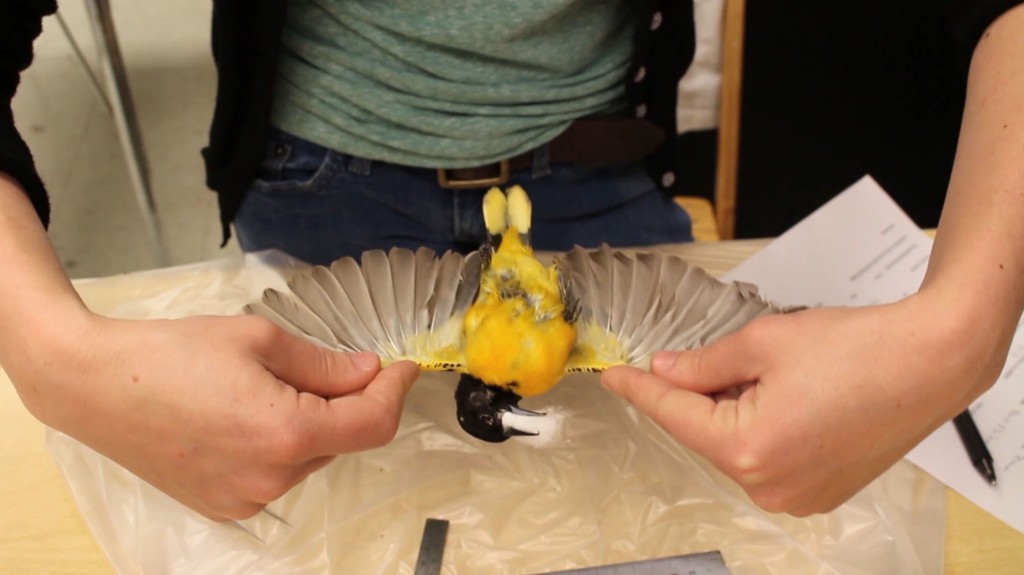BioPresence Film Screening Event
April 28, 2015 6pm to 7pm Hagerty Hall Theater
Created by undergraduate students in Art & Technology courses in the Department of Art, each of these films presents a unique perspective on non-human animals on the Ohio State University campus. The BioPresence project is an interdisciplinary, campus-wide project that considers our co-presence with animals as important to notice, document, map, discuss and actively plan for. #AnimalOSU
Fallen Flyers, Michael Matches (5’ 26”) – A horror drama exploring the issue of bird deaths caused by windows in our human structures.
Worms, Taryn Ely (2’ 30”) – To encourage environmental change and create a more sustainable world, it is important to address younger generations and to suggest tangible solutions.
Homo Sapiens: Bipedal Beasts, Brian Li (4’ 35”) – Our furry friends on the Oval are explored from a more “intimate” perspective.
Transitions, Sarah Hockman (1’ 19”) – Comparing and contrasting an animal’s natural habitat with the urban environment they become surrounded by due to human presence.
Unnoticed Gentrification, Ricardo Jared Partida (2’ 53”) – How can we know the other? How can we learn how to live with them?
Bird Skinning, Daniel Denoble (7’ 46”) – Documenting the Museum of Biological Diversity’s process of preserving dead birds found on campus for education and research.
Sushi Feeds, Gaopeng Chen (4’ 00”) – This humorous video documents an experimental performance of cooking and feeding sushi to wild ducks on campus.
Off Campus Feral Cats, Samantha Walker (1’ 28”) – Attempting to understand the relationships forged between humans and feral cats through the eyes of the cats.
ShadowStract, Maggie Willis (1’ 22”) – Animals remind us of their presence through the marks they leave behind as they pass through, leaving abstract “shadows” in their wakes.
Two Empty Mugs, James Psathas (5’ 20”) – An unusually informal interview with PHD researcher Samuel Bolton who discovered a new mite species on the Ohio State University Campus.
Squirrel Eyes, Zach Poltor (1’ 10”) – A minute from the perspective of a squirrel on Ohio State’s campus.
Ugly Duckling, Gaopeng Chen (2’ 00”) – Can we design objects that help us get closer views of the wildlife we share space with?
Wetlands, Greg Smith (3’ 24”) – A video highlighting the environmental issues surrounding wetlands and introducing the research of the Wilma H. Schiermeier Olentangy River Wetland Research Park.
Present, Past, & Future of Campus Wildlife, Jake Woodruff (2’ 27”) – A perspective on what we think about campus life and maybe what campus life thinks about us.
Interview with Stanley D. Gehrt, Michael deLaubenfels (3’ 00”) – Questions are answered concerning the lack of wildlife on the OSU grounds.




